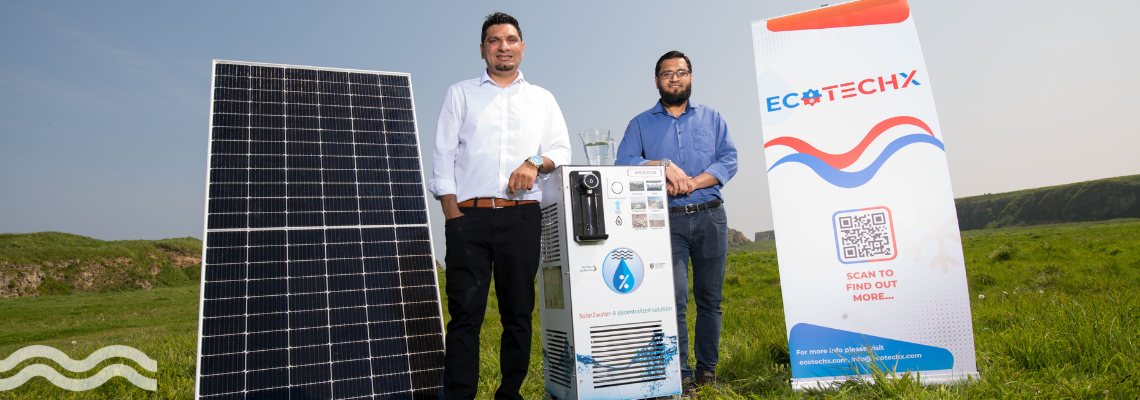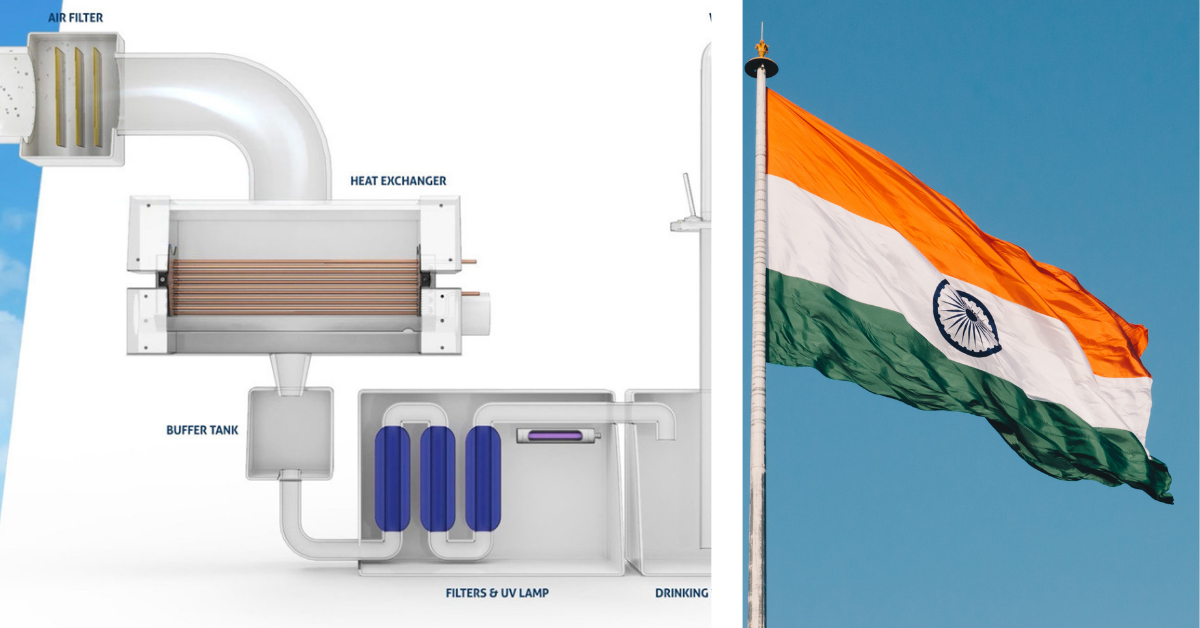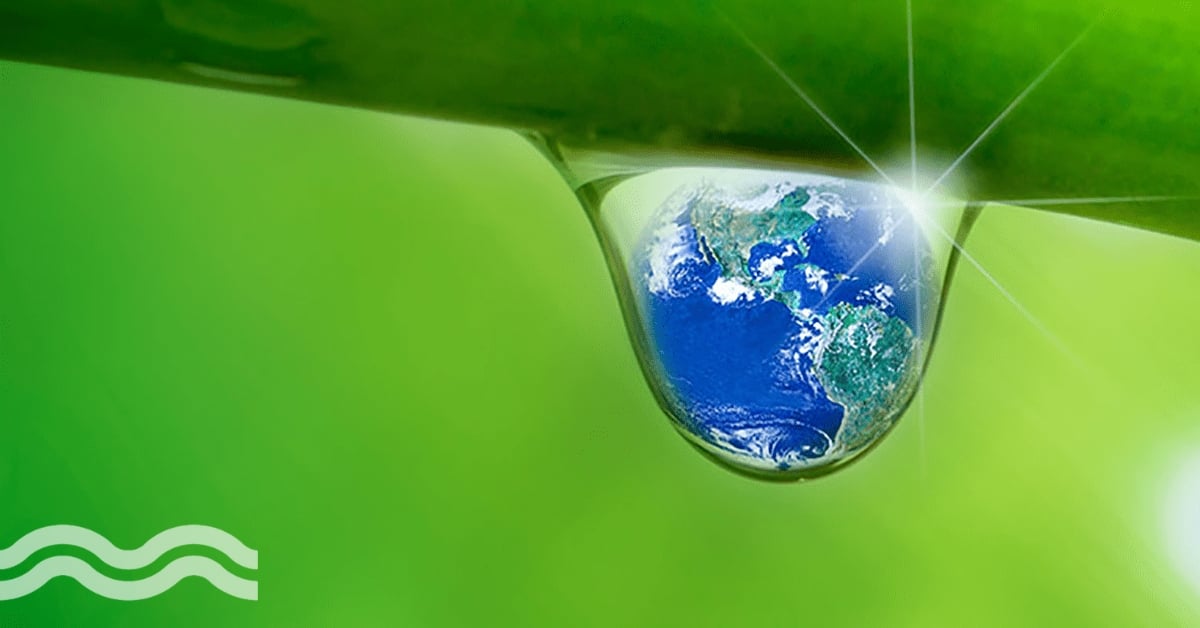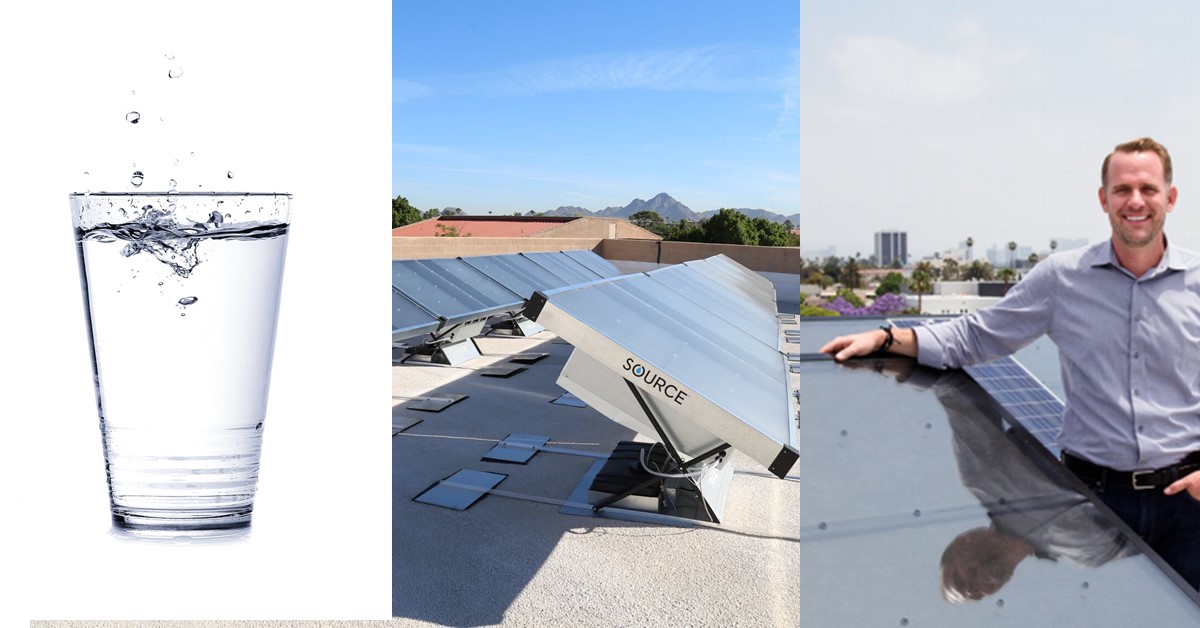TECH DIVE: Atmospheric Water Generation
Water scarcity is an issue that resonates throughout the world. Whether subject to climate change, conflict, mis-management or pollution, access to water affects millions of people every day, from personal use to industry. The water industry, however, is nothing, if not resourceful and innovative.
Water strategies are now being written into the sustainability goals of global corporations and national governments. Local communities are fighting for control of their rights to access and use water.
Tech companies and investors are seeing opportunities to provide solutions to problems that many people thought might become insurmountable. From water replenishment strategies to water reuse, from greywater recycling to wastewater treatment and desalination, the need to look after our most precious resource has never had more visibility.
Point of use water generation
Many of these innovations require huge processes and footprints, involving transportation and storage, long-term goals and planning, national strategies and targets set in the future.
But what about water supply in places where the above processes are not available? Can water generation be provided on a point-of-use basis? The answer is yes, and one technology that can provide such as service is Atmospheric Water Generation (AWG).
Oded Distel, vice president of business development at H2OLL explains: "AWG is the ability to produce water from the atmosphere in a constant and controlled way."
The main use for AWG systems? "Drinking water is the most logical segment to address," Distel adds.
AWG technology
But how do AWG systems obtain water from the air? Dr Muhammad Wakil Shahzad, associate professor and head of subject, Northumbria University, UK, is the founder and CEO of EcoTechX (a spinout from Northumbria); he explains the process:
"The process involves capturing humid air and cooling it below its dew point to condense the moisture into liquid form. This condensed water is then collected, filtered, and purified to make it safe for drinking."
One of the factors that makes AWG so versatile is that it can powered by different energy sources. In areas or situations where electricity may not be readily available, point-of-use AWG systems can be powered by solar power and, potentially, other renewable energy sources.
Shahzad says that AWG systems typically employ two main techniques:
- Condensation-based AWG: This method cools air down to its dew point using refrigeration or other cooling technologies, causing the moisture to condense into liquid water.
- Sorbent-based AWG: This approach uses materials that absorb water vapor from the air (desiccants) and then releases the moisture when heated, allowing for water collection.
Where is AWG best deployed?

AWG systems have many possible scenarios for use, including where they need to operate independently of water infrastructure, and the fact that the technology lends itself to point-of-use applications means that they are ideally placed for drinking water provision.
Distel adds: "In many parts of the world safe drinking water is one of the biggest challenges. Being able to provide high quality drinking water, using an easy to implement solution, close to point of use, can be a game changer, in the water drinking market."
The above scenario also minimises transportation, storage and the single use plastics often associated with providing drinking water to hard-to-reach places.
Shahzad agrees, adding that AWG systems are: "Suitable for deployment in areas with limited or no access to clean water, areas suffering from water stress, and in areas where water scarcity is a significant issue."
He adds that these areas might include:
- Remote and rural communities: In places with limited access to traditional water infrastructure, AWG systems provide a decentralised and reliable source of water.
- Disaster relief and emergency response: AWG systems can be rapidly deployed in areas affected by natural disasters such as earthquakes, hurricanes, or floods, where local water infrastructure is damaged. The ability to quickly provide clean water makes AWG an essential tool for disaster relief agencies.
- Military and defence applications: AWG systems are used by military forces operating in arid regions or in remote areas where conventional water supplies are not available.
- Urban applications: AWG technology is being explored for use in urban settings to reduce reliance on municipal water supplies, especially in areas with unreliable water distribution systems. AWG systems can be installed in commercial buildings, hospitals, and schools as a supplementary water source, ensuring a continuous supply of clean drinking water.
Main benefits of using AWG
The integration of AWG with renewable energy sources like solar power enhances its potential to provide a continuous and eco-friendly water supply, even in regions with limited grid access.
Shahzad explains the main benefits of using AWG systems:
- Sustainability: Reduce reliance on fossil fuels and can help to lower the carbon footprint associated with water production. The use of natural refrigerants, such as R290, further minimises environmental impact by reducing greenhouse gas emissions compared to conventional refrigerants like R134a.
- Accessibility: Provide a clean water source to areas that lack reliable access to water. This is especially beneficial for rural, off-grid communities or regions with intermittent water supply. AWG systems can be installed locally, removing the need for long-distance water transportation or complex infrastructure.
- Efficiency: Improve water extraction rates even in low-humidity environments (as low as 4-5 grams of water per cubic meter of air), which is a significant improvement over conventional AWG systems that require higher humidity levels
- Portability and rapid deployment: Systems are modular and portable, making them ideal for deployment in emergency situations. Once installed, they can begin producing water immediately, making them invaluable in disaster response scenarios.
- Cost-effectiveness: With advancements in material science and engineering design, modern AWG systems have significantly reduced energy consumption.
AWG systems in the marketplace
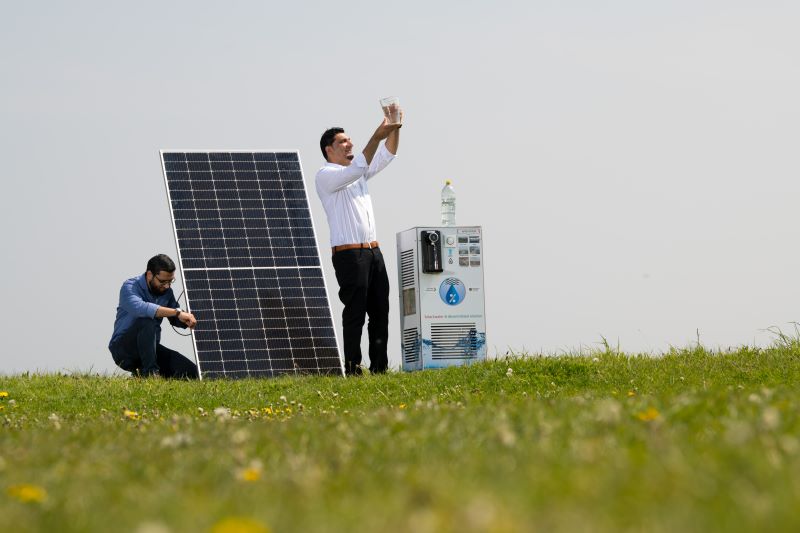
Solar2Water System
Solar2Water is a portable, solar-powered advanced atmospheric water generator (AWG) designed to provide clean drinking water by extracting moisture from the air. It is particularly well-suited for off-grid and remote areas where traditional water supplies are scarce. The system uses advanced desiccants, a novel design and solar panels to produce reliable and constant amount of water irrespective of outside humidity, making it highly energy-efficient and sustainable solution. Its scalability makes it applicable for both individual households and larger communities.
The Solar2Water system operates by capturing atmospheric moisture using high-performance desiccants. The moisture is absorbed by the desiccants and is released through heating, after which it is condensed into liquid water.
Powered by solar panels and equipped with energy storage systems, Solar2Water operates continuously, even in low-humidity conditions. Notably, it can produce a constant supply of water regardless of external humidity due to novel design and AI control, overcoming a common limitation of conventional AWGs. This makes it reliable in a wider range of environments. The system also provides cold air as a byproduct, which can be used for cooling.
The Solar2Water system addresses multiple challenges of conventional Atmospheric Water Generators (AWGs). Firstly, traditional AWGs are highly dependent on ambient humidity, which limits their ability to provide a consistent water supply in varying weather conditions. Solar2Water overcomes this by decoupling water production from external humidity, making it far more reliable across different climates.
Secondly, conventional AWGs require large infrastructures, leading to high capital and maintenance costs. In contrast, Solar2Water is a standalone plug-and-play system that reduces these costs by being portable and easy to deploy.
Lastly, Solar2Water directly tackles the global water scarcity crisis, particularly in remote, off-grid, or disaster-stricken regions. Its ability to generate water independent of the environment makes it ideal for regions with unreliable or damaged water infrastructure. Additionally, the system plays a crucial role in promoting gender equity by reducing the time women and girls spend fetching water, thus freeing them for other activities.
The system is equipped with AI-based controls that help to reduce energy use through efficient operation.
H2OLL
H2OLL is a spin-off from Technion (IIT), it has launched its first commercial scale, containerised AWG capable of producing 1,000 litres a day.
The unit harvests air moisture using a 'continuous liquid desiccant' system that uses very little energy. The vapour is then condensed into liquid water. The system has been designed to operate in a wide range of humidity levels.
The system is currently being used to provide drinking water in the Negev desert in Israel and the company has plans to utilise solar power to allow the unit to be deployed in areas without a power supply.
At present, H2OLL is proposing to offer the units in two ways: purchasing the system outright, or via a water as a service contract.
Akvo
Kalkutta, India-based Akvo design AWG systems in different sizes to suit different needs. These units are for urban use and need an electricity supply. At the higher end of the scale, the Akvo Water Block can generate up to 500 litres a day, but its modular and scalable design allows it to be linked to produce anywhere up to 100,000 litres a day. The blocks are designed to work in temperatures ranging from 15 to 55 degrees Celsius in a humidity range between 30-99 per cent.
Energy consumption while operating in its optimum range is 4KW at 30°C and 80 per cent relative humidity.
Akvo provides smaller units that range from the 180K (500 litres a day) down to the more portable 'pod' unit which has an average supply of 50 litres per day.
A1RWATER
UAE-based A1RWATER aims to take its AWG capabilities one step further by opening a bottling facility in Dubai. The move will support the UAE's sustainability goals.
"Our mission is to redefine how the world accesses this vital resource, starting from a single drop to entire cities," A1RWATER founder and chief executive Alex Guy told The National.
"New water technology is all about getting to scale," he explained. "The facility is a major milestone, and a testament to our commitment ... we are just beginning to scratch the surface of what's possible."
The company has partnerships with a range of hotels in the region that sees it supply bottled water. It also produces AWG generators and dispensers that are used in a range of different commercial and industrial environments, as well as solar-powered units that can be used in off-grid scenarios.
The company's AWG systems range from portable A1R30 machines capable of producing 30 litres of drinking water a day, and the A1R100 machines can produce up to 100 litres a day, which have been used in schools, through to the more industrial A1R1000 and A1R3000 units.
The future for AWG
The market for AWG systems is broad. The ability to use renewable energy to provide reliable and clean drinking water without any connection to existing water infrastructure will have many use scenarios, especially in water-stressed regions of the world.
H2OLL's Distell certainly believes there is a bright future for AWG: "I believe AWG is soon to become a common practice for drinking water."
EcoTechX's Shahzad agrees: "The future potential for AWG is vast, particularly in regions severely impacted by climate change, where traditional water sources like rivers and lakes are becoming less reliable. The ability of AWG to operate in low-humidity conditions with improved efficiency opens new possibilities for water generation in dry and arid regions globally."
Improvements in desiccant development and heat exchanger designs, as well as renewable energy connections, point to a desire to innovate in AWG technology, which may attract investors.
Shahzad concludes: "AWG is poised to play a vital role in meeting the world's growing demand for clean water, especially in regions where traditional water sources are becoming unreliable due to environmental challenges. The future will likely see more widespread use of efficient, scalable AWG systems that are powered by renewable energy."
We promise never to send you spam and you can unsubscribe at any time!
